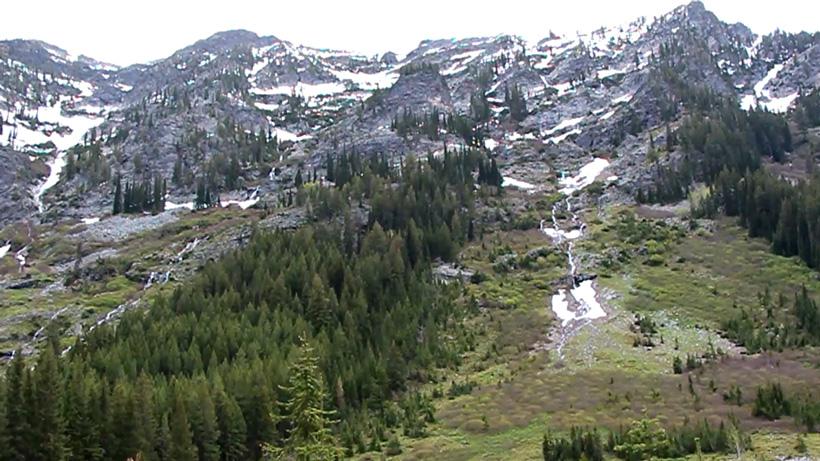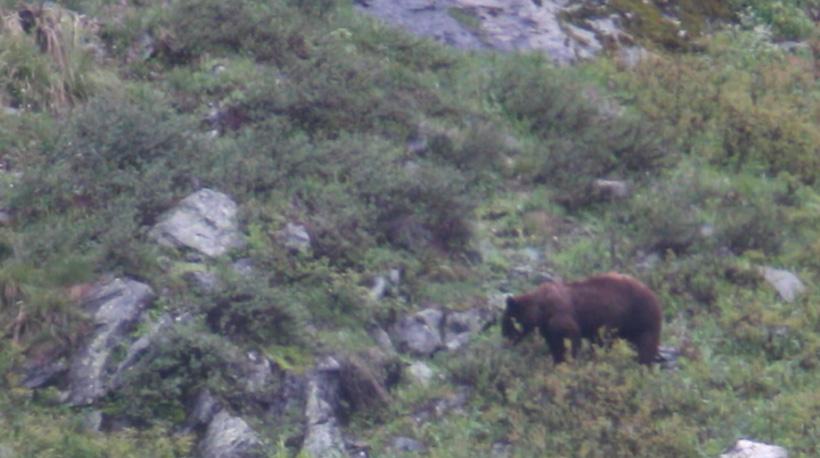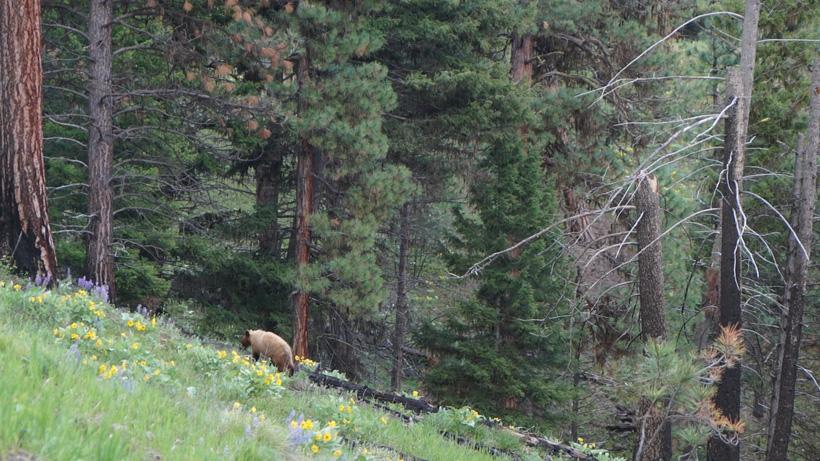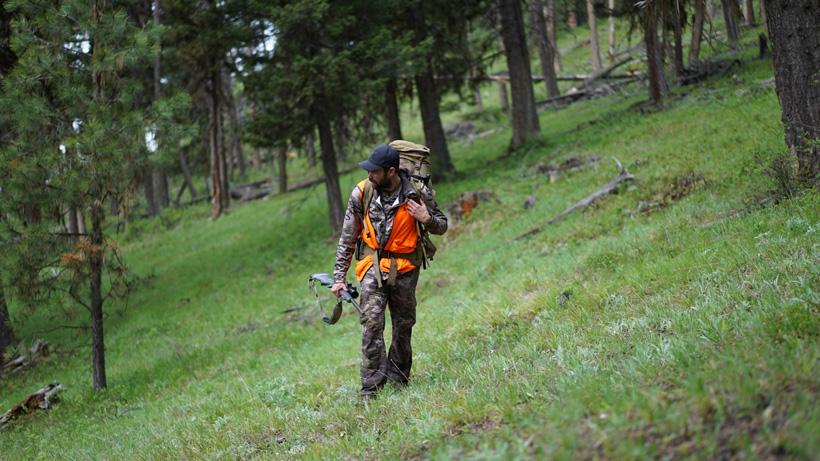





A spring bear I ended up taking eating new budding flowers on a grassy hillside.


Spot and stalk bear hunting in the spring can be one of the most exciting hunts out west. It can also be one of the most difficult to master and find consistent success. The reason for that is the fact that bears are solitary, hard to spot, and they have a low population density compared to other animals. When it comes to spot and stalk hunting, things seem stacked against you, but by focusing on their preferred food sources, you can quickly locate places to concentrate your efforts and find success.
Bears are omnivores but up to 85% or more of their diet may be plant based. Bears have an inefficient digestive system when it comes to breaking down plants. This makes them animals that are driven by their need to constantly eat. To be more efficient and make up for their inability to easily break down plants, bears are selective eaters. This means they target food that has the most nutritional benefit. For example, they will pick only the new buds from a plant, the berries from a bush, or they will seek out mast crops like acorns and pine nuts in the fall. Using this knowledge, bears can be narrowed down to specific areas and food sources depending on the time of year.
The best part, a lot of these places can be located when e-scouting on GOHUNT Maps.
Learn more about GOHUNT Maps here
When targeting bears early in the spring, food may still be limited early as most of the range is covered in snow. This can be one of the best times to hunt bears as there are fewer areas, and they are likely to be found. High country avalanche shoots are a great place to start as bears start to emerge from high county dens. Also, the lower country can be productive for early spring as it has had more time to green up, providing some good food sources.
A spring bear I ended up taking eating new budding flowers on a grassy hillside.
Visually, looking for nutrient-rich areas early in the spring season means concentrating on that neon green color. As plants start to regrow nutrients come with them. Small flowers will bud, and clovers will spring up on the edges of open areas, also many of the shrubs in these areas will start to bud producing a nutrient-rich source of food from the new growth. Dandelion, if found, can be one of the best bear magnets as it is nutrient-dense when other sources of food may not be in good supply.
A lot of this new growth will start to emerge around snow lines, open areas, or even open edges in the timber, along logging roads, and in burns. This can be a great place to spend time. Looking at the makeup of an area can help pinpoint productive places.
In the alpine focusing on openings near the snow line and below can be productive. New growth of skunk cabbage can be a preferred food source before they mature enough to become inedible for most animals. Looking toward those open wet spots may be productive. Also, anywhere grass is starting to pop up.
Other high country food sources include rodents that can be dug up. Marmots and ground squirrels are an excellent food source found on the open rocky slides and skree.
In timbered country, clear cuts and old logging roads can be the ticket, especially in lower country where there can be some early growth of clover, dandelion, and grass.
South slopes may also hold a concentration of food including some berry species that held through winter. Also, creek and stream areas where over winter rose hips remain are good locations for bear activity. Many bears will also seek out winter kills early in the year. Winter range for elk and deer can be good places to look. Most winter kills end up in the bottoms of creeks and are not the most reliable food sources but can be a decent place to look for sign if a carcass is found. This is also a great layer to look on when e-scouting on GOHUNT Maps.
As the spring progresses, food sources become more available and spread out. Bears may start digging more starch roots like glacier lily, balsamroot, and sweet vetch of the open high country. Any pocket of greenery is a sure bet bears will seek it out as a food source.
Later in the spring, an abundant food source will switch from plants to protein, as fawns and calves are an easy meal. Finding elk calving areas can be a great place to concentrate efforts. Glassing over areas with high deer and elk numbers can also be good for locating bears. Late in May and into June open hillsides and protected pockets will provide deer with food for their offspring but also draw in predators.
Focusing on what bears will be eating allows you to narrow down the place to start hunting and concentrate your glassing or still hunting efforts. The spring can be the most consistent time to locate bears because they are hungry and tied to more limited food sources. By thinking of spring bear hunting as finding the best food source for where you are while you are in the field, you can narrow the areas to look, and give yourself better odds of turning up a bruin.
Hone in on your bear spot using GOHUNT Maps